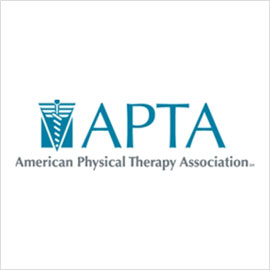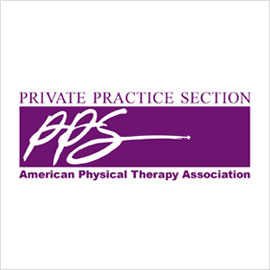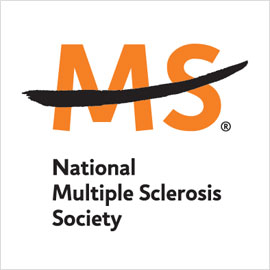Read Our Blog "What is Aquatic Therapy"
Water can make doing exercises and movements easier and less painful. The use of water activities removes excessive forces on joints and allows your body to transition to land-based rehabilitation. ARSO currently has one Hydroworx pool shown in the photo at our Lanham location. At this location for aquatic therapy, you will receive a physical therapy plan tailored to your health concerns. Read More
Hydrotherapy (Aquatherapy)
is any activity performed in water to assist in rehabilitation and recovery from eg. hard training or serious injury.This therapy is been used for thousands of years. It is a form of exercise in warm water and is a popular treatment for patients with neurologic and musculoskeletal conditions. They enable an individual to practice performing movements that are coordinated and balanced.
The goals of this therapy are muscle relaxation, strengthening, improving joint motion and reducing pain and in specific populations it helps improve muscle coordination and balance
Physical properties of water
In common with other forms of matter, water has certain physical properties which include mass, weight, density, relative density, buoyancy, Hydrostatic pressure, surface tension, refraction and reflection
Of the physical laws of water that the physiotherapist should understand and apply when giving Aquatherapy, those of buoyancy and hydrostatic pressure are the most important. Individuals’ movements are slowed by the buoyant force of the water and the hydrostatic pressure. The viscosity of the water also provides extra sensory cues that help with the timing of muscle activation. The lateral pressure exerted and the effect of buoyancy together will give the feeling of weightlessness.
Buoyancy
is the force experienced as an upthrust which acts in the opposite direction to the force of gravity. A body in water is therefore subjected to two opposing forces. When the weight of the floating body equals the weight of the liquid displaced, and the centres of buoyancy and gravity are in the same vertical line, the body is kept in stable equilibrium. If the centres are not in the same vertical line the two forces acting on the body will cause it to roll over until it reaches a position of stable equilibrium.
Hydrostatic pressure
The molecules of a fluid thrust upon each part of the surface area of an immersed body. Pascal’s law states that fluid pressure is exerted equally on all surface areas of an immersed body at rest at a given depth. Pressure increased with the density of the fluid and with its dept. This means that swelling will be reduced more easily if exercises are given well below the surface of the water where the increased pressure may be used.
The hydrostatic pressure place on the outside of the body causes a decrease in Blood Pressure (BP) peripherally and an increase in the BP in and around the heart. This can cause potential problems for eg Chronic Heart Failure (CHF) and Coronary Artery Disease CAD) clients and needs to be taken into consideration. The greater the depth, the higher the amount of change in the factors mentioned above.
Surface Tension
Under tension, the fluid’s surface functions as a membrane. The fact that the tension is closely correlated with the object’s size is the primary relevance of this feature. As a result, moving an object or body part above the water requires more effort than moving it below. This can be accomplished with the help of devices like floaters.
Physiological Effects
The physiological effects of water therapy combine those brought by the hot water of the pool with those of the exercises. The extent of the effects varies with the temperature of the water, the length of the treatment and the type and severity of the exercise.
The physiological effects of exercise in water are similar to those of exercise on dry land. The blood supply to the working muscles is increased, heat is evolved with each chemical change occurring during the contraction, and the muscles temperature rises. There is an increased metabolism in the muscles resulting in a greater demand for oxygen and increased production of carbon dioxide. These changes augment the similar changes brought about by the heat of the water, and both contribute towards the final effect. The range of joint movement is either maintained or increased, and muscle power increases.
During the immersion, the physiological effects are similar to those brought about by any other form of heat but less localized. A rise in body temperature is inevitable because the body gains heat from the water and from all the contracting muscles performing the exercises. As the skin becomes heated the superficial blood vessels dilate and the peripheral blood supply is increased. The blood flowing through these vessels is heated and by convection, the temperature of the underlying structures rises.
The relatively mild heat of the water reduces the sensitivity of sensory nerve endings and the muscle tone will diminish when the muscles are warmed by the blood passing through them
Therapeutic Effects
- Relieve pain and muscle spasm
- To gain relaxation
- To maintain or increase the range of joint movement
- To re-educate paralyzed muscle
- To strengthen weak muscles and to develop their power and endurance
- To encourage walking and other functional and recreational activities
- The hydrostatic effect may relieve pain by reducing peripheral oedema and by dampening the sympathetic nervous system activitythe hydrostatic effect may relieve pain by reducing peripheral oedema and by dampening the sympathetic nervous system activity
- To improve balance and coordination
- To improve circulation ( trophic condition of the skin
- To give the patient encouragement and confidence in carrying out his exercises, thereby improving his moral
- The warmth of water blocks nociception by acting on thermal receptors and mechanoreceptors, thus influencing spinal segmental mechanisms
- Warm water stimulates blood flow positively, which leads to muscle relaxation
Aquatic Therapy Program
Features with an state-art poolsand an above-ground, underwater treadmill enclosed in a transparent, tempered-glass case, which increases the number of options available to patients for rehabilitation. The setting offers a range of warm-water temperatures, aquatic environments and therapeutic treatment options, depending on patients’ needs. Other features of the pool include:
- Built-in treadmills for retraining and observing gait patterns
- Video systems for monitoring therapy activities
- Multiple jets used for resistance






